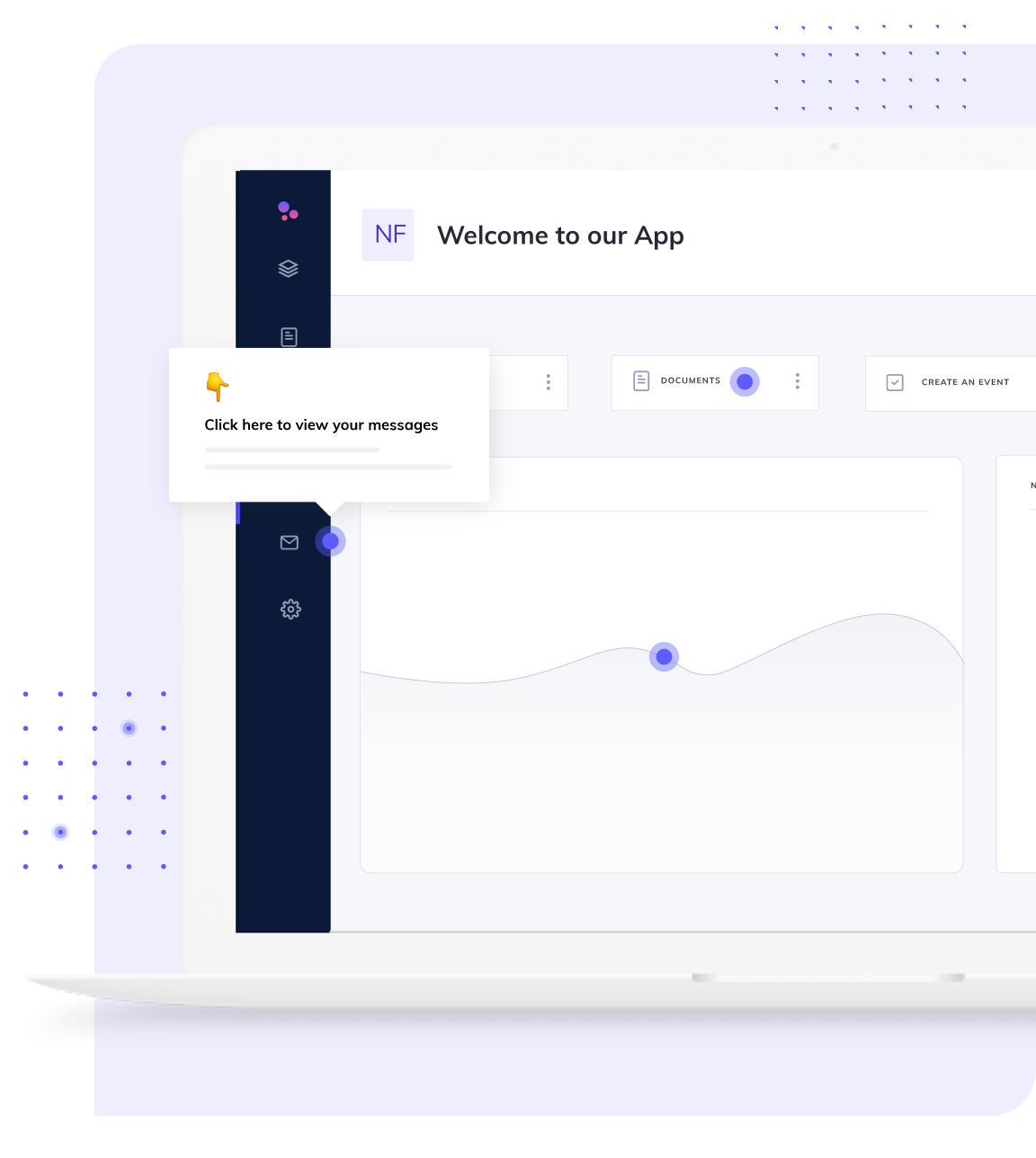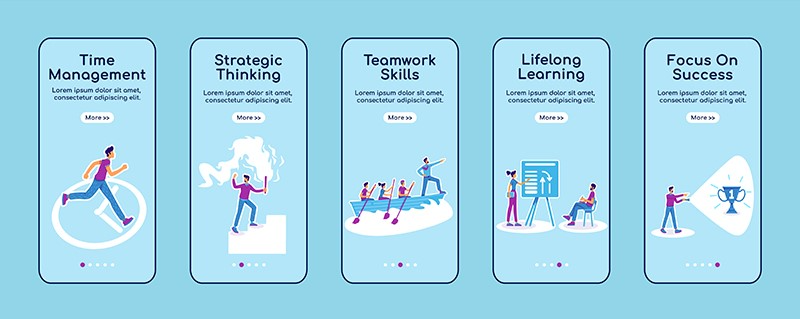.webp?2025-12-17T15:00:29.367Z)
Spotify Wrapped ideas make stats lovable

Mobile App Onboarding and Its Influence on the Customer Journey Map
Mark Polskii
Author @ InAppStory
As the digital ecosystem grows increasingly competitive, creating a user-friendly, engaging, and efficient mobile app becomes more critical than ever. An integral component of this is the onboarding process, which serves as a user's initial interaction with an app.
Onboarding is a pivotal phase in the user experience (UX), with the potential to significantly shape a user's perception and subsequent engagement with the app. In fact, according to a report by Appcues, well-designed onboarding can increase user lifetime value by up to 500%. Therefore, understanding and enhancing the onboarding process can lead to improved user retention, satisfaction, and overall success of the app.
But onboarding does not operate in isolation; it's a significant piece of a larger puzzle, forming the initial stages of what we know as the "Customer Journey Map." This journey map is a holistic, visual representation of a customer's entire experience with a product or service from initial contact to long-term engagement. In the context of mobile apps, the customer journey begins with the onboarding process and extends through various stages of interaction, engagement, and satisfaction.
Understanding Mobile Onboarding
Mobile app onboarding is the first series of screens a user encounters when opening an app for the first time. Its primary function is to introduce the app and its functionalities to new users, guide them on how to navigate the app, and demonstrate the value it offers. By providing an effective onboarding experience, developers can ensure users understand the app's core benefits and how to access them, which can significantly increase user retention and overall satisfaction.
Onboarding comes in several forms, each suited to different kinds of apps and user expectations:
- Benefit-oriented onboarding: This method emphasizes the advantages the user can derive from using the app. Rather than just showing how to use the app, it tells the user why they should use it, focusing on the app's unique selling points and value propositions.
- Function-oriented onboarding: This style of onboarding is more instructional, offering a step-by-step guide of how to use the app. It's commonly used in apps with unique or complex functionalities that users may not intuitively understand.
- Progressive onboarding: This type of onboarding provides instructions as the user navigates through the app. Instead of showing all the information at once, progressive onboarding only provides tips when relevant to the user's current activity within the app.
- Hybrid onboarding: As the name implies, hybrid onboarding combines elements of the other types, typically blending function-oriented and benefit-oriented onboarding. This approach seeks to both instruct users on how to use the app and sell them on why they should use it.
Examples of successful onboarding strategies abound. For instance, the language-learning app Duolingo uses a hybrid approach, showcasing its unique selling points while also guiding users through an initial language lesson. This onboarding experience demonstrates value instantly and helps users understand how to interact with the app, paving the way for long-term user engagement.
The Role of Onboarding in the Customer Journey

The onboarding process serves as the initial stage in the customer journey, acting as a critical determinant in shaping the user's overall experience with the app. From the moment a user downloads an app, the onboarding process begins, introducing the user to the app's features, its functionality, and the benefits it offers. This initial interaction heavily influences the user's decision to continue using the app or abandon it.
The implications of onboarding on the customer journey are multifaceted, including:
- First Impressions and User Perception: The onboarding process sets the stage for the user's relationship with the app. An intuitive and engaging onboarding experience can leave a positive first impression, inspiring users to explore the app further. In contrast, a confusing or cumbersome process may deter users from progressing past the initial stages.
- User Engagement: Onboarding plays a crucial role in driving user engagement. By effectively showcasing an app's core features and demonstrating its value proposition, onboarding can motivate users to interact with the app more frequently and more deeply.
- User Retention: Retention is a key indicator of app success, and onboarding is pivotal in achieving high retention rates. By providing a smooth and engaging onboarding experience, users are more likely to continue using the app, decreasing the likelihood of app abandonment.
- Conversion Rates: For freemium or subscription-based apps, onboarding can significantly influence conversion rates. By effectively communicating the app's value during onboarding, users are more likely to see the benefits of upgrading to a paid version.
Strategies to Improve Mobile App Onboarding to Enhance Customer Journey
Creating an outstanding mobile app onboarding experience is essential to shape a positive customer journey and foster long-term engagement with your app. Employing the following strategies can help enhance your onboarding process and positively influence the customer journey map.
User Testing for Continuous Improvement
User testing is a valuable practice that involves observing real users as they interact with your app during the onboarding phase. By doing so, you can identify pain points, confusion, or bottlenecks that may hinder a smooth onboarding experience. Regularly conducting user testing allows you to make timely improvements and optimize the onboarding flow, resulting in higher user satisfaction and retention rates.
Leveraging Data and User Feedback
Data-driven insights and user feedback are invaluable resources for improving your mobile app onboarding. Analyzing user behavior and feedback through analytics tools can provide valuable information about user drop-off points or areas of improvement in the onboarding process. By gathering and analyzing this data, you can make informed decisions to enhance the onboarding experience, ultimately leading to happier users and increased app engagement.
Interactive Onboarding
Static and lengthy onboarding processes can lead to user frustration and abandonment. Adopting interactive onboarding techniques can make the experience more engaging and user-friendly. Implementing interactive tutorials, guided walkthroughs, and interactive elements that encourage user participation can significantly improve user retention rates. By keeping users actively engaged during onboarding, you increase the likelihood of them progressing further into the app and completing the desired actions.
Incentives and Rewards
Providing incentives and rewards during the onboarding process can motivate users to complete the necessary steps and remain engaged with your app. Incorporating gamification elements, such as achievement badges, in-app currency, or exclusive benefits, can create a sense of accomplishment and value for the user. Offering incentives not only encourages users to complete the onboarding but also sets the foundation for building a loyal user base, contributing to a positive customer journey.
Mobile App Onboarding Methods
Mobile App Stories
With the increasing use of mobile applications, the market is witnessing a need for more engaging, immersive, and intuitive onboarding methods. One such innovative approach is the use of "Mobile App Stories" during the onboarding process.
Mobile App Stories, inspired by the success of the 'Stories' format popularized by social media platforms like Snapchat and Instagram, offer a modern and engaging way to onboard users. They involve a series of screen displays or a flow of interactive information in a story-like format. Here's how it can enhance the onboarding process:
- Interactive and Engaging: Unlike traditional onboarding methods, Mobile App Stories create an interactive experience, engaging users from the get-go. This format allows users to swipe through screens at their own pace, fostering a more interactive and user-controlled experience.
- Simplicity and Brevity: Stories are designed to be short and concise, each screen conveying a single, focused message. This ensures information is not overwhelming and can be easily understood by the user.
- Visual Appeal: Mobile App Stories are typically highly visual and can incorporate a variety of multimedia elements, such as images, videos, and animations. This not only enhances the aesthetic appeal of the onboarding process but also makes it more engaging and memorable.
- Personalization: Stories can be personalized based on user preferences and behavior, making the onboarding experience more relevant and compelling for each individual user.
By integrating Mobile App Stories into the onboarding process, developers can provide an immersive and engaging introduction to their app. This innovative approach can captivate users' attention, provide a clear understanding of the app's functionality and benefits, and ultimately lead to a more positive and satisfying customer journey.
Hotspots

Hotspots in app onboarding offer a contemporary and engaging method to introduce users to the app's functionalities. They are interactive points strategically placed throughout the onboarding screens, guiding users' attention and facilitating a seamless learning experience. Here's how Hotspots can elevate the onboarding process:
- Focused Guidance: Unlike conventional onboarding methods, Hotspots provide targeted guidance, leading users to specific elements and features that are crucial to their app experience. By highlighting these key areas, users gain a deeper understanding of the app's value proposition and its core functionalities.
- Seamless Onboarding: Hotspots contribute to a smoother onboarding process, eliminating the need for lengthy tutorials or overwhelming instructions. By breaking down information into easily digestible chunks, Hotspots simplify the learning curve, allowing users to swiftly grasp the app's functionalities.
- On-the-spot Problem Solving: Hotspots can act as a quick troubleshooting tool during onboarding. If users encounter a potential obstacle or error, Hotspots can guide them through possible solutions, minimizing frustration and ensuring a smooth onboarding experience.
- A/B Testing: Hotspots offer an opportunity for A/B testing during onboarding. By experimenting with different Hotspot placements, styles, or content, developers can measure the effectiveness of each approach and optimize the onboarding experience accordingly.
Incorporating Hotspots into app onboarding empowers developers to offer a dynamic and engaging introduction to their app. This innovative approach captivates users from the outset, allowing them to explore and understand the app's features effortlessly. The versatility of Hotspots makes them a valuable addition to the onboarding process.
Coach screens

Inspired by the concept of a coach or mentor, these screens act as virtual guides, providing step-by-step assistance to users as they navigate the app. Here's how Coach Screens can enhance the onboarding process:
- Interactive and Supportive: Coach Screens offer a distinctive and empowering experience, engaging users through interactive guidance. This personalized support empowers users to easily grasp the app's core features, instilling confidence as they navigate through the onboarding process.
- Gradual Learning: Coach Screens employ a progressive approach, introducing concepts step by step. Each new step builds upon the previous one, ensuring users develop a comprehensive understanding of the app's functionalities without feeling overwhelmed.
- Contextual Assistance: These screens can provide contextual help, appearing at relevant points within the app. This feature enables users to access guidance precisely when they need it, enhancing the overall user experience and reducing frustration.
- Visual and Clear: Coach Screens often incorporate visual elements, such as animations, tooltips, and illustrations, to convey information effectively. This visual clarity aids users in grasping complex features and functionalities with ease.
Integrating Coach Screens into the onboarding process demonstrates a commitment to user-centric design. It ensures that users receive personalized and meaningful assistance while exploring the app's offerings, resulting in a more satisfying and successful onboarding experience.
What else can you do to improve your app onboarding?

In our world where everything is whizzing by at breakneck speeds and user attention is more valuable than ever, onboarding comes to the top of the list of things to take care of when creating an app. The first few moments a user spends with your app can make all the difference between retention and abandonment.
If you're still not clear on where and how to approach the onboarding process, we have the solution. Our team has prepared a special report for you, fully dedicated to onboarding and all the subtleties of its application. Our practical report is comprehensive resource designed to propel your app to success. We understand the challenges you face in capturing and maintaining user interest, and our report is here to equip you with the strategies you need.
In-depth research within this report presents actionable methodologies to optimize app onboarding, amplify user retention, and propel revenue growth. Acting as an all-encompassing manual, it delves into crucial facets and fine-tuned approaches that leave a profound impact on users, ranging from the value of a seamless onboarding encounter to the delivery of customized suggestions.
Prepare to enhance your app onboarding process to new heights! Head over to our mobile onboarding research eBook and take the first step towards achieving app greatness and secure your copy today!
Conclusion
In today's hyper-competitive digital jungle, where apps are vying for the elusive attention of users, nailing the perfect onboarding is like pulling off a magic trick that leaves everyone in awe. It's your app's grand entrance, the red carpet moment when you roll out the welcome mat for your users. Get it right, and you'll have them singing praises like your app is the latest superstar. But get it wrong, and well, you might as well prepare for the sound of crickets.
Remember, it's not just about showing users how to swipe left or tap the screen like it's a bongo drum, it's about captivating them from the very first "hello" and making them feel like your app is the missing puzzle piece they've been searching for all along. Like a master chef concocting a secret recipe, sprinkle some magic, mix in a dash of charm, and voilà! You've got an onboarding experience that'll make your users do the happy dance.
So, as you embark on the journey of app development, take a step back and examine your onboarding process with a critical eye. Aim to create an experience that resonates with users, eases them into your app's unique world, and leaves them excited to explore further. With a well-crafted onboarding strategy, you can set the stage for a memorable and fruitful customer journey, where your app becomes an indispensable part of their digital lives

